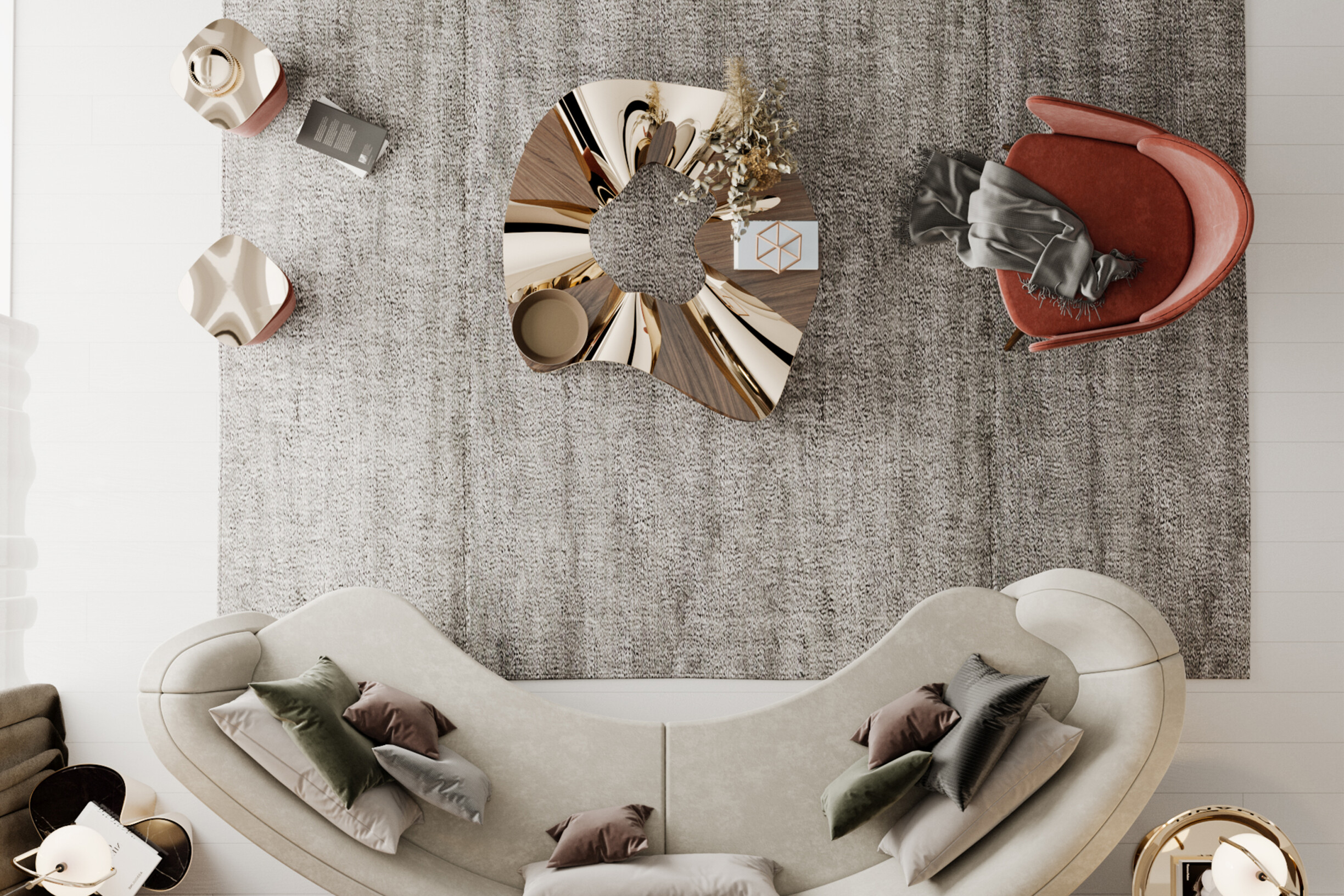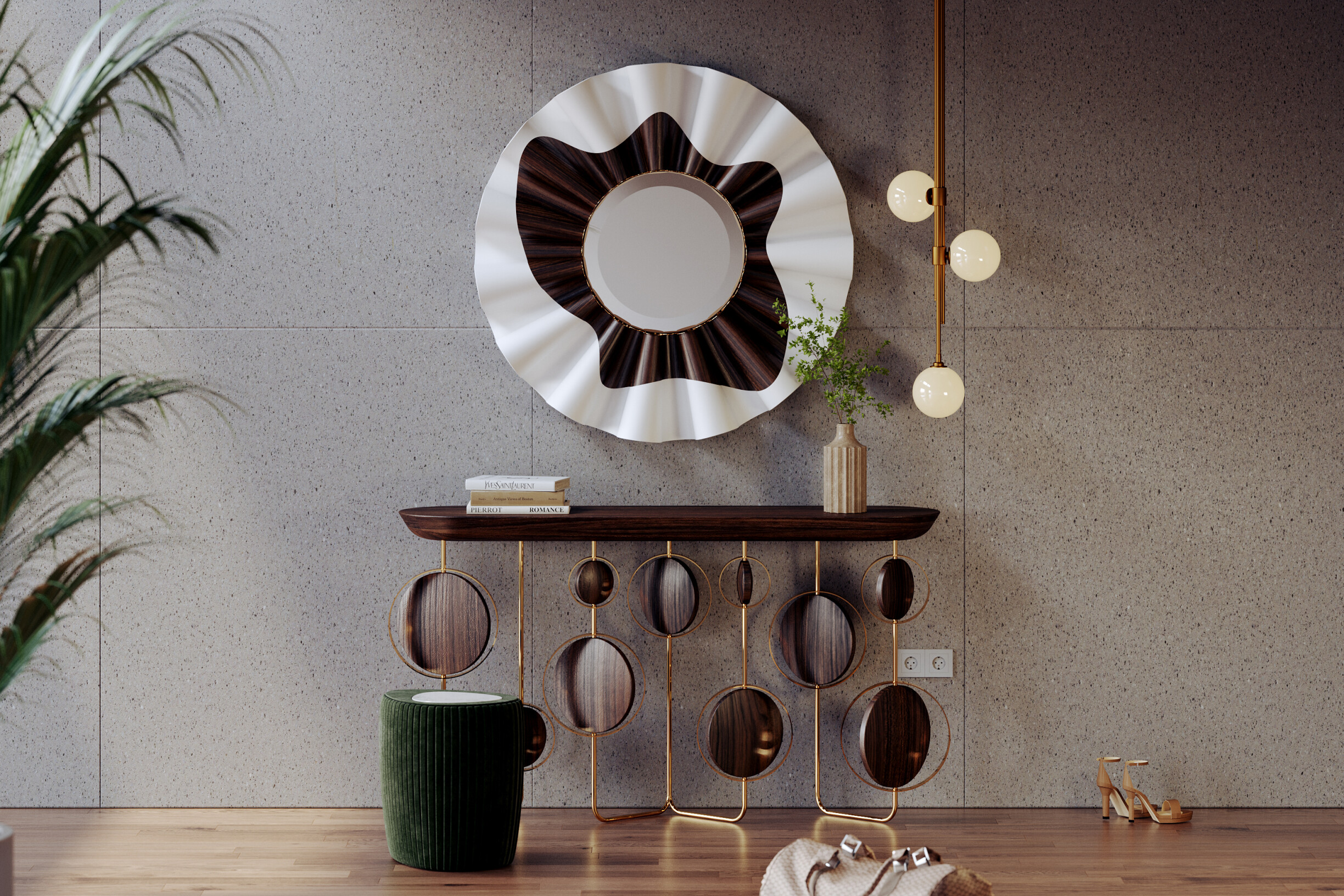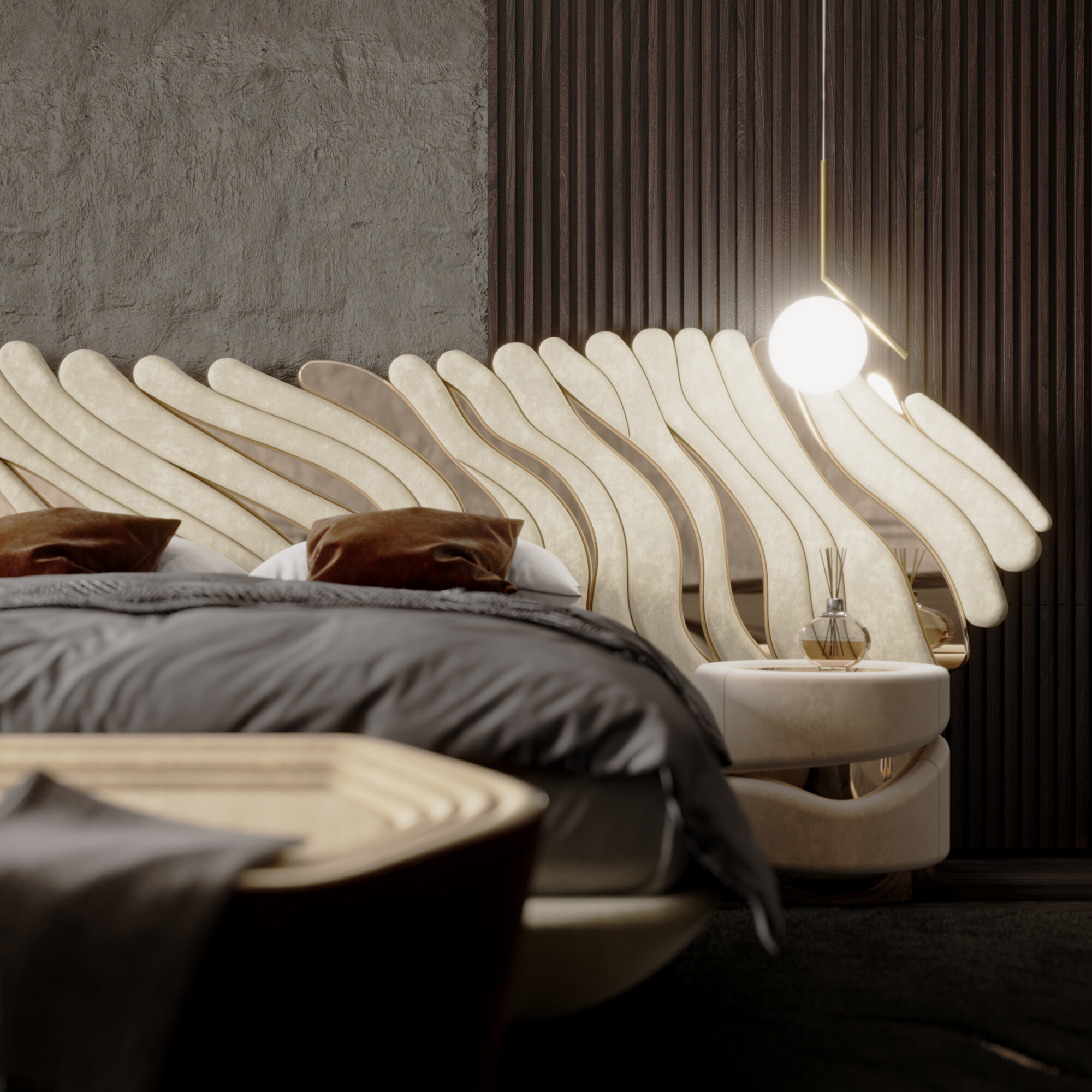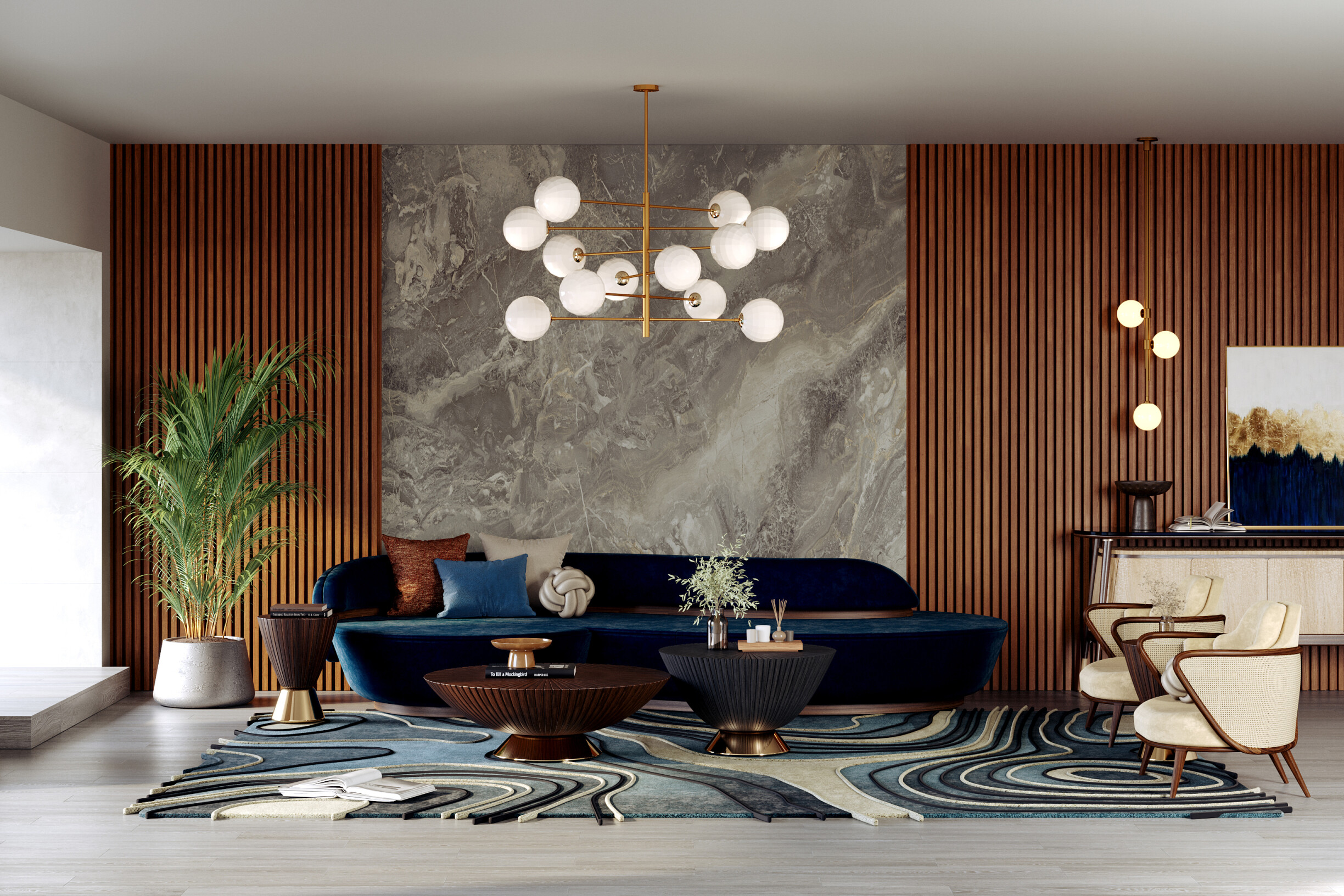Thousands of years ago, on the plains of ancient China, it was believed that the secret to a prosperous and balanced life lay in the invisible flow of energy. They called it Qi, a vital form circling through all living things and their spaces. Today, this ancient knowledge remains just as relevant, shaping the way we think and feel about the spaces around us, connecting us to a rich cultural heritage.
In the modern world of interior design, Feng Shui is more than just an exotic or mystical tradition. It is a tool that allows designers and architects to manipulate spaces to improve the flow of energy, creating areas that promote well-being, harmony, and productivity. Although at first glance, Feng Shui may seem like something purely spiritual, its principles can be effectively applied to any design project.

“To me, [feng shui] is not about superstition. Feng shui is always about architecture. It’s about building a building in the best way possible.”
Cliff Tan, Singaporean architect, author and feng shui expert
Feng Shui is an ancient Chinese practice that aims to harmonize spaces and promote the circulation of positive energy, known as Chi. Chi is the life force that flows through all living things, including homes and workspaces. Literally, Feng Shui means 'wind and water'. two essential elements in nature whose interaction is a metaphor for the flow of energy.
Applying Feng Shui to interior design means adjusting the layout and objects in a space to ensure that this energy flows in a balanced and natural way.
The five elements are fundamental in Feng Shui decoration and directly influence the room. Each element represents a specific quality of energy and has a particular effect on spaces.
1. Wood represents growth, vitality, and flexibility. It can be incorporated through plants, wooden furniture, or shades of green. Wood is ideal for areas where you want to promote personal growth or prosperity.
2. Fire symbolizes energy, passion, and transformation. This element can be introduced through candles, fireplaces, or warm colours, such as red and orange. Fire is excellent for stimulating creativity and bringing a vibrant energy to a space.
3. Earth: associated with stability, nourishment, and protection. Colours such as brown or yellow and natural elements like ceramic or marble bring balance to spaces.
4. Metal represents precision, organization, and mental clarity. It can be incorporated with metallic objects, neutral colours such as white or gray, and geometric structures. The metal element is ideal for enhancing focus and efficiency.
5. Water: symbolizes calm, renewal, and abundance. Water fountains, mirrors, and colours such as blue and black help smooth the energy flow and promote relaxation.

A harmonious space should have a balanced representation of the five elements. Too much of one element can create imbalances, and too little can result in stagnant or disjointed energy. For example, introducing the fire element at strategic points in a living room or home office can activate areas associated with career and success, while the water element can be used to calm the space.
Applying Feng Shui principles to décor does not mean that decorative style, aesthetics, or functionality should be compromised. Quite the opposite. Feng Shui provides a framework to guide design decisions to create visually appealing and energetically harmonious spaces.
Proper furniture and object positioning are fundamental principles of Feng Shui in decoration. The arrangement of elements in a space can directly affect the circulation of Chi, or vital energy, creating more harmonious and balanced spaces. Certain areas and specific positions are fundamental in Feng Shui.
1. Main entrance: the Chi's mouth
The entrance is considered the "Chi mouth" of the home, where energy enters. It should be welcoming and free from obstructions. Therefore, lighting plays a vital role in attracting positive energy. Add soft, attractive lighting. Also, keep the area free of chaos, clutter, and unnecessary objects that can block energy entry.

2. Bedroom: promote rest and serenity
The bedroom is a crucial room for rest and regeneration. The trick here is to create a relaxing atmosphere that encourages sleep.
It all starts with choosing the bed. The headboard should be firm and solid and positioned against a wall, symbolizing stability and support. It is also important to position the bed so that you can see the door without being directly in line with it. This provides a sense of security. To maintain fluid energy and promote quality sleep, it is recommended to limit the use of electronic devices in the bedroom.
Finally, opt for neutral or pastel colours that convey calm and serenity. Douro bed from ALMA de LUCE would be a perfect example, considering the tones of the headboard and its solidity and firmness.


3. Living room: positive energy living space
The living room is a space for socialization and should enhance communication and connection. To do this, position sofas and chairs in a circular or U-shape to facilitate interaction and dialogue. Interestingly, this is also a common practice in Majlis settings. In contrast, you should avoid sharp angles that can generate tension; you should prefer furniture with rounded edges, such as the Rusak sofa by ALMA de LUCE, to soften the energy.
You can also strategically place mirrors to reflect light and visually expand the space while keeping them from facing the door. Plants also help purify the air, balance the area, and bring nature indoors.

4. Kitchen: the heart of the house
The kitchen is considered the heart of the home, representing prosperity and health. The arrangement of the fire and water elements should be opposite to avoid element conflict and promote a healthy energy flow. The stove should also be positioned so the person cooking can see the door. Additionally, keep utensils and equipment organized to facilitate circulation and efficiency.
Warm colours such as yellow, red or orange can be used in moderation to stimulate vitality and increase feelings of warmth and comfort.
5. Office: focus and productivity
Without a doubt, a harmonious workspace can increase productivity and creativity.
In a home office, consider positioning your work desk so that you can see the door but not be directly aligned with it. A disorganized desk can block the flow of ideas. Take the opportunity to decorate the space with inspiring and motivating elements, such as images or objects that represent your client's goals.
6. Bathroom: purification and renewal
The bathroom is associated with the elimination and purification of energy. Applying Feng Shui to this room ensures that positive energy is not lost. As such, the toilet door and lid must be kept closed. Large mirrors should increase the feeling of space and reflect light. Plants or small wooden objects help neutralize excess water and balance the elements.
Disorganization and accumulation of objects: disorder is one of the biggest enemies to the circulation of Chi. Always prioritize organization.
Furniture that blocks the entry of energy: Placing large furniture, such as sofas or cabinets, in front of doors or windows can block the entry of positive energy.
Inappropriate colours: inappropriate use of colours can disturb the energy balance.
Excess water elements: although the water element is essential for Feng Shui, excessive use can destabilize the area, especially in bedrooms or offices.
Incorrect position of the bed: placing the bed in line with the door or under a window is considered a severe error in Feng Shui. This can result in a feeling of vulnerability or restless sleep. The bed should be in a commanding position.
Applying Feng Shui to decoration allows you to create spaces that promote well-being, balance, and energetic harmony. By understanding its principles and avoiding common mistakes, interior designers can create spaces that nourish the soul. Make Feng Shui an ally in your projects and notice the difference.
We hope our tips are practical. Contact us if you are ready to implement the principles of Feng Shui and surprise and dazzle your customers. We will help you to create exclusive and unique projects that win over your customers!
Did you like this article? You can follow us on Instagram, Facebook, and Pinterest to stay updated with the latest architecture, design, and interiors news.